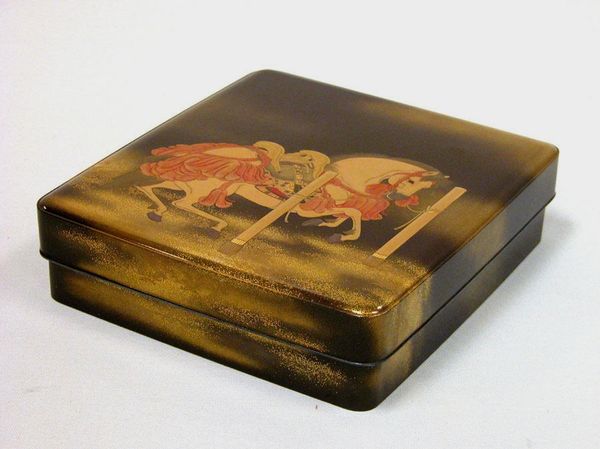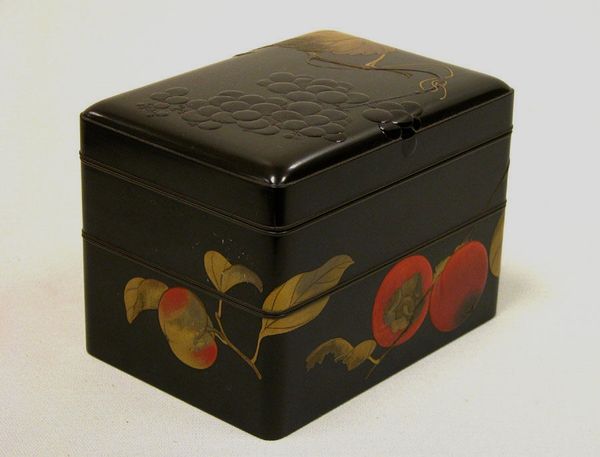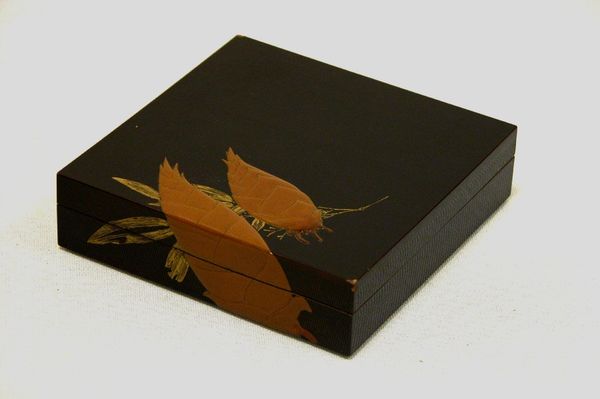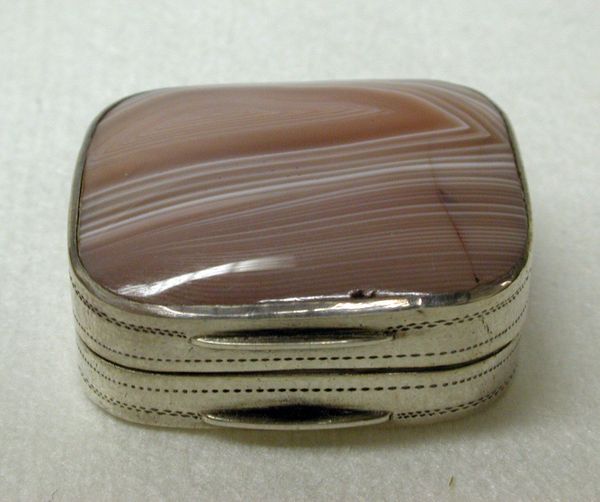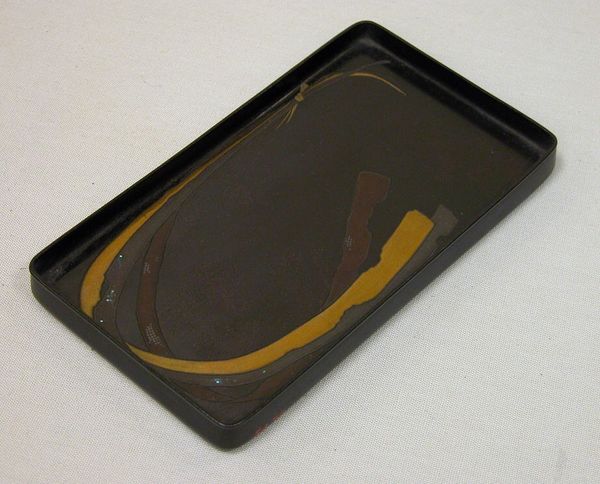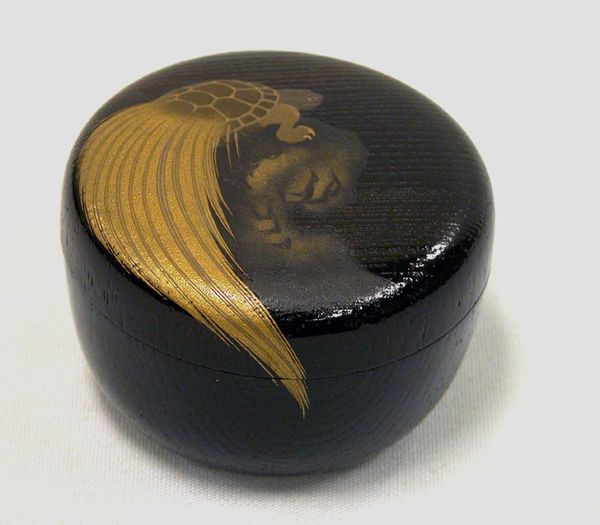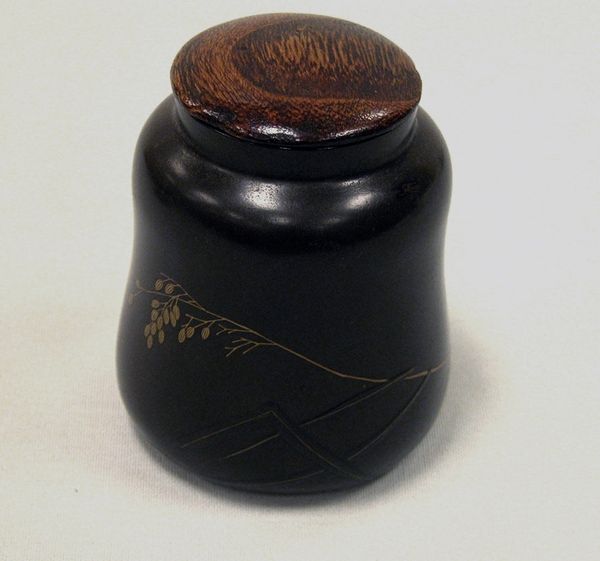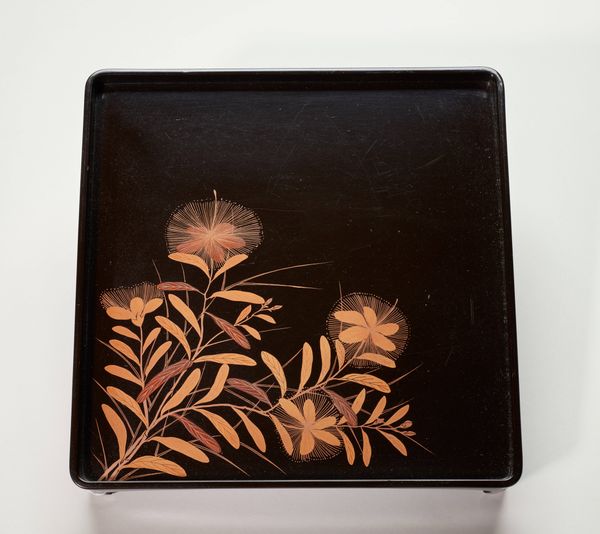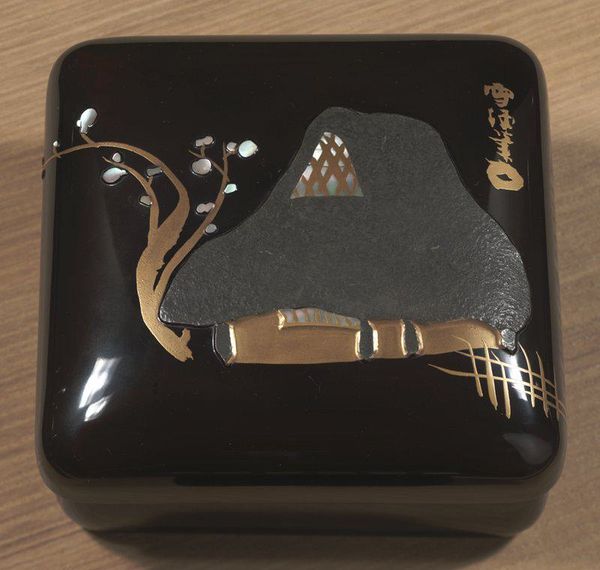
carving, wood
#
carving
#
asian-art
#
japan
#
wood
#
decorative-art
Dimensions: H. 1 3/8 in. (3.5 cm); W. 2 1/4 in. (5.7 cm); L. 3 1/4 in. (8.3 cm)
Copyright: Public Domain
Curator: Here we have a 19th-century wooden box with carving by Shibata Zeshin. Editor: Oh, the contrast is striking. That deep, lustrous black against the almost iridescent red of the crab… It’s like a small treasure chest holding potent symbolism. Curator: Zeshin was incredibly skilled in applying lacquer techniques in unconventional ways, almost blurring the lines between painting and sculpture. Consider the laborious process involved: the preparation of the wood, the layering of the lacquer, the carving. Editor: And the crab! It dominates the visual field. In Japanese iconography, the crab is a symbol of tenacity and strength, but it also carries connotations of protection and good fortune. Curator: It also could be interpreted as symbolizing transformation because crabs are creatures that molt, shedding their shells. I am especially struck by the fact that the bottom corner of the box seems to feature the lower half of another crab. Is it emerging from the sea? Editor: I think there's definitely an aspect of the sea or hidden depths to it. Perhaps this layering reflects a belief in unseen potential? I’m also compelled to remember, it’s also just a box—likely used for everyday personal items, blurring art with the functional. Curator: Exactly. What does it tell us about consumption, labor and daily lives within 19th-century Japan? Zeshin's craft elevates functional object. Editor: Precisely! In its own way, the crab acts as a kind of guardian spirit. This unassuming, yet intricately worked box holds layer upon layer of cultural meaning, and hints at what was important at that moment. Curator: A powerful reminder that objects often have greater importance through what they reflect about daily lives. Editor: A potent little box, indeed.
Comments
No comments
Be the first to comment and join the conversation on the ultimate creative platform.
